|
This essay by Marina Genkina is excerpted from the introduction to a new catalog of Israeli-Russian artists titled ARTSESSION 2007: Contemporary Israeli Artists from Russia (© 2007). Originally written in Russian, it was translated by Isaac Gorelic and Sonia Kunova-Gorelic for ARTSESSION 2007. This essay is a forerunner of Zeek’s forthcoming print edition, Zeek: Russified, featuring the sophisticated, multilayered work coming out of the Russian Jewish community. ARTSESSION 2007 was financed by the artists whose work is represented, along with support from Mikhail Rozentov of ROZ Publishing House and Anatoly Baratynsky, a featured artists and originator and organizer of the catalog. – David Stromberg, Russian Print Issue Editor and Zeek Assistant Editor
|
This catalog is the first venture of its kind: we present the works of forty-seven artists who came to Israel from the former Soviet Union in the last three decades of the twentieth century.
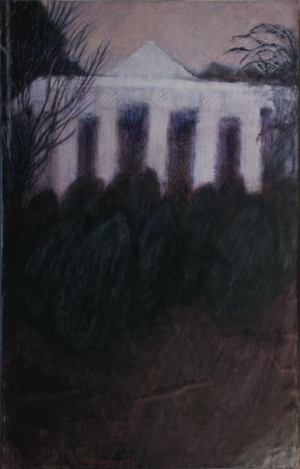 This publication serves several goals, one of which is presenting these Russian-speaking artists together, despite the wide variety of media, techniques, styles and genres in which they work. Notwithstanding their differences in age, education and region of origin within the Soviet Union, there are common denominators that unite them all. Foremost are the Russian language and the Russian culture in which they were brought up, with all its associations and allusions. Further, they share their complex experience of life in the Soviet Union – a country so completely different from Israel – a totalitarian and imperial country, large in size, with different values and a different environment; a different physical world, a country with a different light.
This publication serves several goals, one of which is presenting these Russian-speaking artists together, despite the wide variety of media, techniques, styles and genres in which they work. Notwithstanding their differences in age, education and region of origin within the Soviet Union, there are common denominators that unite them all. Foremost are the Russian language and the Russian culture in which they were brought up, with all its associations and allusions. Further, they share their complex experience of life in the Soviet Union – a country so completely different from Israel – a totalitarian and imperial country, large in size, with different values and a different environment; a different physical world, a country with a different light.
The artists represented here are professionals with a solid art education background who have achieved success in their countries of birth as well as in Israel. Almost all of them have had numerous exhibitions (some artists could not even recall them all) but only the most important of them are listed in this catalog. Most of the artists in this book, however, remain practically unknown to Israeli art patrons or to the art establishment.
It is not the purpose of this introduction to blame anyone or any set of institutions for this situation. But it is important to try and find out why it is so. Why, after so many years does a “wall” still separate “Russian-speaking” artists from Israeli artists? This separation exists not only between the artists, but generally between immigrants and veteran Israeli citizens. Thus, the second and third goals for the publication of this catalog are to introduce these Russian-speaking artists to a wider public, and to explore their work in a well-presented compilation that also explains the reason for their marginal existence.
Presently their existence truly is marginal, in spite of the fact that the mass media, politicians and representatives of the Israeli art establishment continuously spout the mantra of “the immense contribution of Russian aliyah to Israeli culture.” The questions then are: What is the contribution by Russian-speaking artists to Israeli art, and, indeed, is there a contribution? What is the place of Russian-speaking artists in the Israeli art establishment, and, do they, in fact, have a place there? It would seem that no one knows and no one is trying to find out. While the influence of the art of various waves of immigrants on Israeli art in the first half of the twentieth century is well known and documented in detail, the same cannot be said about the end of the twentieth century.
Artists of the 1970s
Neither this catalog as a whole, nor this introduction will provide comprehensive answers to these questions, but at least we begin to contemplate them. Let us first look at what happened to Russian-speaking Israeli artists of the early 1970s. At that time, several artists arrived from Russia, some of whom today are among those few who are well-known here: Michail Grobman, T. Preminger, Yan Rauchwerger, and Meir Pichhadze, as well as artists belonging to the group “Aleph”: Eugene Abeshaus, Anatoly Basin, Tania Kornfeld, and Sasha Okun. In 1977, the artists Komar and Melamid arrived in Israel, but they left for the USA shortly after.
While the nature of artistic circles of Israel in the 1970s was different from that of today, their attitudes towards the newly arrived artists has not changed much since. Here is how Michail Grobman and Sasha Okun describe their reception:
at that time, in the 1970s, in Israel, nobody knew anything about the art scene of Russia. What officially appeared here – the exhibitions of the Soviet art – was pathetic. The Israeli art establishment did not know and did not care to find out about “Russian” art, since the art of the second Russian avant-garde was not in the least similar to Israeli or American art. All that was known of Russia was that it was poor and desolate and not much seemed to be evolving there and the same notion existed of Russian art. (From my interview with Grobman, “Kontekst”, July 31, 2003).
If anything, Sasha Okun is more cynical:
Any establishment, particularly a young establishment, has the tendency to be aggressive and to defend itself from outsiders. Always and everywhere, art organizations are built on the mafia principle – once you get right up to the trough, feed and keep your place; do not let others elbow in, otherwise your share will be smaller. Therefore, the reaction of the Israeli art establishment to the arrival of “Russian” artists was mixed: they received a politically correct welcome, but in reality they were pushed away.
There was, however, a rational for the rejection. Israel, being a young and western-styled country, was following the path of “normal” art development – in the 1920s it was following Paris, in the 1930s it was following German Bauhaus, and by the 1970s it was following New York. At the time when Israel was following New York, a great number of “Russian” artists arrived who in their artistic development lagged behind the West by at least a century. This was probably because, except in rare cases, it was traditional artists of the Russian mould who arrived. They were immediately labeled as ‘retrograde reactionaries.’ Later, opinion started to change but in the late 1970s, all “Russian” artists were considered retrograde and provincial. In the 1990s it became known that all “Russian” artists were excellent draughtsmen. This is unfair: not all of them were good draughtsmen and not all of them were provincials. (From interview with “i” correspondent, Natalya Zubkova, N 37, October 9, 2001).
It is common for “aliens” to be treated as outsiders. In the case of Russian-speaking immigrant artists, they not only came from a different culture but they spoke with a different artist’s vernacular than did the Israeli art world.
Israeli Art Meets Soviet Culture
Russian-speaking artists spent many years in the Soviet Union fighting for their right to use contemporary artistic forms. Such forms, and the desire to use them were treated as 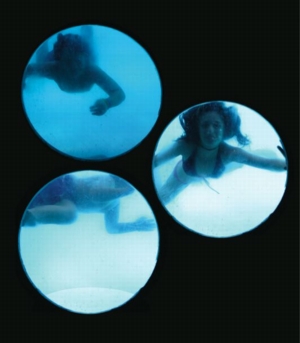 state treason in their country (let us recall, for example, the famous Soviet poster: “Today it is jazz he plays, tomorrow the motherland he betrays”). By coming out of this battle victorious, the avant-garde artists felt themselves heroes.
state treason in their country (let us recall, for example, the famous Soviet poster: “Today it is jazz he plays, tomorrow the motherland he betrays”). By coming out of this battle victorious, the avant-garde artists felt themselves heroes.
In Israel, however, nobody understood this kind of heroism and nobody thought of evaluating artists on the basis of their political loyalty, or, for that matter, of evaluating their loyalty on the basis of artistic forms they used in their creative work. Generally, the Israeli artists did not focus on the issue of form, contrary to what was usual in the Soviet Union. An artist’s mastery of contemporary artistic form was presupposed, and not mastering it was viewed with condescension.
For example, one of the most widespread western trends that was also common in the Soviet Union in the 1960s and 1970s was conceptualism, which allowed artists to build their work on euphemism and irony, enabling the leading Soviet intellectuals to use their ability to “read between the lines.” That is how Sots Art – the Soviet variant of conceptualism – was born. However, in Israel, not only were the Soviet nuances not understood due to a complete ignorance of the reality of Soviet life, the use of nuance was not necessary for Israeli artists – no one was forbidding anything. Although pressure from the establishment and artistic preferences naturally existed, the Israeli police were not standing guard at the exhibition entrances, nor were the Likud Party or the Labour Party forcing closures of exhibitions.
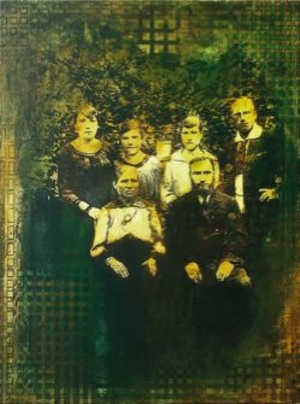 In Israel, minimalism and earth art was the preference. Neither the former nor the latter required the mastery of academic skills. Added to this was the extreme politicization of the Israeli art, which was and is of a leftist leaning, while the Russian-speaking artists’ inclination was mostly to the right.
In Israel, minimalism and earth art was the preference. Neither the former nor the latter required the mastery of academic skills. Added to this was the extreme politicization of the Israeli art, which was and is of a leftist leaning, while the Russian-speaking artists’ inclination was mostly to the right.
The immigrants of the 1970s believed the Zionist dream that the real Promised Land was a purely Jewish land. They believed that they would merge with the glorious family of Jewish artists and would elevate Israeli art to an unprecedented height. They were not prepared for the fact that the Israeli art establishment did not welcome Jewish art – at all.
The 1990s: Creating Israeli-Russian Art
In the 1990s, the number of arriving artists grew immensely, and the situation completely changed in the Soviet Union as well as in Israel. Yet, Russian-speaking artists still found they had to look to the West in order to gain approval from the Israeli art establishment.
By the middle of the 1990s, there were Russian-speaking artists who had reached success with their works abroad, where they sold well. Artists’ financial situation, compared to their initial years, improved and this had a great impact on their self-respect. This is when the Russian-speaking artists took the initiative and viewed the idea of integration into the Israeli art circles as being not only unrealistic but undesirable.
The concept of “Russian” artists has crystallized along these lines: “We are not keen on the idea of locking ourselves in a ghetto; we are willing to accept all artists, including veteran Israeli artists and immigrant artists of other countries, provided that it is we who manage the exhibitions and events. We play by our rules, which include: maintaining a professional level that presupposes mastery of the artistic technique the artist is using, and respecting the profession of the artist. Whoever is willing to accept the rules and show interest will meet the requirements and be more than welcome.”
The following ten years saw the rise of ”Russian" art groups and galleries, mainly in Jerusalem. This catalog traces these Jerusalem artists—with the caveat that there is significant work done during this period by Russian-speaking artists based in Haifa and Tel Aviv. Cataloging that work will be left to future historians.
In Jerusalem, in 1994, an exhibition was organized on the premises of the studio of A. Baratynsky and Alexander Gurevich(two additional exhibitions were organized later), in which several artists, including Sergey Terayev, participated. The exhibition was called “Art Underground Session.” The name is a play on words: the studio is located in a bomb shelter that is under the ground and so it also evokes the idea of the Soviet “underground” exhibitions at which artists presented what they wished and not what they were permitted to show. While the situation in the Soviet Union was one dictated by party politics, in Israel it was and is dictated by the tastes of the art establishment and the art patrons, that is, those who are crucial to the success of an artist. And success did come – even without the help of the establishment. Each exhibition was visited in the first few days by hundreds of people, among them almost as many Israelis as “Russians.”
In the same year as the 1994 exhibition, the “Cultural and Educational Society Teena” was founded in Jerusalem. It’s mission was not exclusively concerned with the arts. It was and is a highly politicized public organization which aims to “demonstrate to immigrants from Russia the advantages and necessities of obtaining peace between the Israelis and Arabs”. Teena also opened a gallery, however, which held solo exhibitions of A. Baratynsky, Benjamin Kletzel, Arkady Livshitz, Vera Shapiro, Julia Shulman, Julia Shulma, and Leonid Zeiger, as well as many group exhibitions.
In 2000, a non-commercial gallery “CoArt” opened in Jerusalem where this writer was an artistic director and curator. The gallery was originally sponsored by funds from “Bracha” and “Yad HaNadiv,” and was open for a year and a half. In that year and a half, thirteen exhibitions were organized. Many of the artists presented in this catalog participated in the exhibitions and, in the case of Benjamin Kletzel and Tania Kornfeld, solo exhibitions were organized for them. The following artists participated in the group exhibitions: A. Baratynsky, Liora Barstein, Galina Bleikh, Anna and Max Epstein, Benjamin Kletzel, Julia Lagus, Menya Litvak, Julia Shulman, and Sergey Terayev.
The gallery was truly conceived not only as an exhibition venue but also as a club for representatives of the artistic intelligentsia where they met during exhibitions, seminars, debates, etc. Its mission reflected the same ideas that were maturing at that time in the Russian-speaking artistic circles, namely: the wall that exists between the artistic circles of veteran Israelis and immigrant artists does not benefit either the former or the latter and it is necessary to at least start chipping at that wall; and, the concept of paternalism with respect to immigrants from the former Soviet Union was to be replaced by the concept of dialogue.
The solution to this problem has not been achieved: the majority of participants in the “CoArt” exhibitions were Russian-speakers. However, something did take root: at the first children’s art exhibition, including the works of students of Russian-speaking teachers, Liora Barstein and Julia Shulman, the works of students of Israeli art schools were also exhibited. There were also solo exhibitions of veteran Israelis organized, which led to lively discussions that went on in spite of the fact that one side did not speak Hebrew very well and the other did not speak Russian at all.
In recent years many artists renewed their connection with Russia. In 2003 the Union of Professional Artists of Israel was formed, largely by Russian-speaking artists. In 2006, Ilya and Tina Bogdanovsky organized the participation of an Israeli group in the 3rd International Biennale of Graphic Art in St Petersburg. More group exhibitions have followed, demonstrating that Russian-speaking Israeli artists are gradually beginning to find a place both in Israel and internationally.
National Identity, Stylistic Diversity
The approaches to painting of the artists in this catalog are totally different: there is the typically Jewish, I would even say Yiddish, humor in pictures by Benjamin Kletzel; the irony and the shock value of many works by Sasha Okun, full of what one might say is sarcastic eroticism; the sharp, “encoded” paintings of Valery Kurov; the meditative landscapes steeped in contemplation of Tania Kornfeld; the worldview of Arkady Livshitz communicated through details – branch, leaves, the trunk of a tree; the cosmic visions emerging in the whirlwinds and spirals of the universe in the world of Julia Lagus; the quiet, nostalgic snow-covered streets of old cities by Joseph Kapelyan; the happiness and joy streaming from the bright multicoloured canvasses of the superb artist, Menya Litvak; the portraits of A. Baratynsky where his family, depicted on old photographs, peer through the torn pixel screen of time; the dynamic water-colour 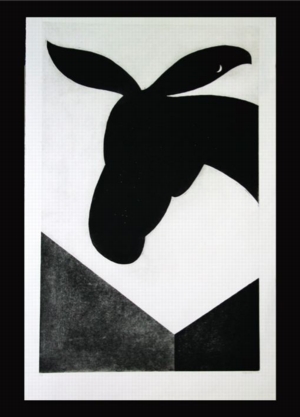 sketches by Masha Orlovich; and the lyrical, nuanced water-colours of Irina Sorochinsky.
sketches by Masha Orlovich; and the lyrical, nuanced water-colours of Irina Sorochinsky.
There is also the typical Moscow school, with its attention to the relationship of subtle colours in the works of Julia Shulman; the surrealistic images of Zely Smekhov with his weird horses flying with abandonment through the universe to better, better, better worlds, but without the Okunesque wonderment, and, finally, there are geometrically constructed structures of Goergy Shapira, evoking diagrams of mechanisms where each part has its own place, wherein the pendulum of the clock does not swing but the cog-wheels continue to engage and the clock works.
A great portion of this catalog is devoted to the "Russian" graphic artists. The scope of techniques used by them is very large, from the most contemporary to the traditional. But, as in painting, perhaps even to a greater degree, one observes two different approaches to what is called “the purpose of art.”
The first approach characteristic of the Russian school is to see art as a way of conveying something significant. The series by I. Bogdanovsky is masterfully executed in the etching and aquatint techniques and is titled “Eschatology” while the black and white sheets of Efraim Zaslavski, where the blots, lines and pen strikes form an almost ghostly world that mirrors our own, is one which appears before us but has a different existence; and the mystical graphic art of Anatoly Schelest is done in the monotype technique, a technique so unpredictable that it opens new paths for the artist, not only in art but also in spiritual life, as happened for Anatoly
The second approach follows contemporary post-modernism, which adopts a rule not to lay open one’s “I” but to hide it behind the mask of irony and self-irony, to pretend that both life and art are no more than a game: we can believe in the artist’s viewpoint or not, but that’s exactly where the artist stands.
Julia Shulma, for example, tries to convince us of his utter seriousness. But mystification is also very much present in his works. His graphic sheets, similar to ancient engravings, are, in reality, originals made in ink, and the ceremonial, grand diagrams or the “scientific” Latin inscriptions cannot fool us as to the real intent of the artist. His works represent the post-modernist interpretation of the Moscow conceptualism of the 1970s.
The catalog also features work done in three-dimensional media, including pieces by the designer and publisher of this catalog, M. Rozentov, who presents installations (both already installed and those existing only as models) designed for public buildings and open spaces in streets and town squares.
Next Generation
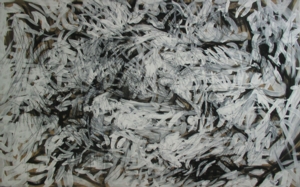 Most of this catalog covers artists of the middle and older generations. But there are also young artists, born in the 1970s, who came to Israel from the Soviet Union between the ages of fifteen and nineteen and received their education in Israel, at the Bezalel Academy of Arts and Design. From an Israeli viewpoint, the Bezalel Academy is a conservative institution but from the Soviet viewpoint, Bezalel is a western, modernist institution that does not provide proper schooling.
Most of this catalog covers artists of the middle and older generations. But there are also young artists, born in the 1970s, who came to Israel from the Soviet Union between the ages of fifteen and nineteen and received their education in Israel, at the Bezalel Academy of Arts and Design. From an Israeli viewpoint, the Bezalel Academy is a conservative institution but from the Soviet viewpoint, Bezalel is a western, modernist institution that does not provide proper schooling.
On one hand, the young artists are different because they were exposed to Western culture at a very young age – during the formative development period of their personality; for them the issue of the right to free self-expression does not exist, it is self-evident. On the other hand, their ideas are rooted also in Russian-speaking culture because they were brought up on Russian songs, stories, literature, theatre and art. The result is very intriguing – despite their tendency toward irony, the young artists have preserved their dedication to “perfection,” to a high degree of craftsmanship, in the best sense of the word.
Such artists demonstrate that art by Russian-speakers in Israel will continue to grow and evolve.
Images: Pina Haus by T. Kornfeld, and Curiosity by M. Rozentov, My Not Distant Ascestors by A. Baratynsky, Eschatology by Tina Bogdanovsky, and Resurrection from the Dead by E. Zaslavski.








Et bien oui et surtout pas vraiment. Ouais étant donné que il se peut qu’on détermine d’autres causes qui certainement citent d’identiques significations. Non car cela n’est pas assez de transcrire ce que tout le monde être autorisé à rencontrer chez certains pages tiers et de le traduire tellement naturellement?